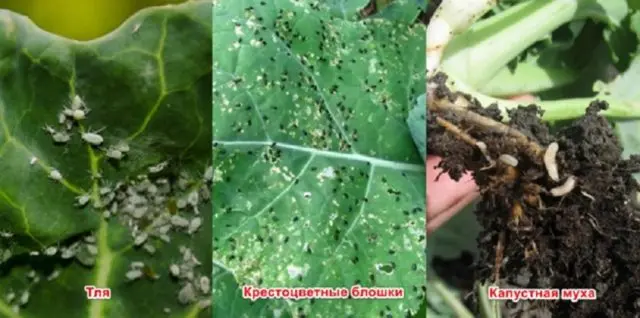Contents
Krautkaiser cabbage is a well-known white vegetable variety with very worthy characteristics. This is a hybrid labeled F1, which is considered demanding care. But compliance with agrotechnical rules allows you to grow a very high yield of juicy and tasty cabbage. The Latin name of the variety is Brassica Oleracea Var. Capitata ‘Krautkaizer F1. Translated from German as Cabbage Monarch.
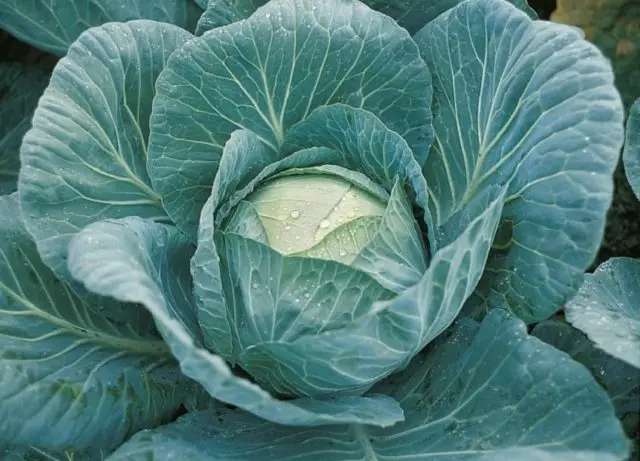
The hybrid has excellent characteristics, which are fully revealed in compliance with the agrotechnics of cultivation.
Description of cabbage Krautkaiser
A hybrid variety of cabbage bred by the Dutch breeders of BEJO ZADEN BV It grows best in a climate of moderate temperatures. It has been cultivated in the Federation since 1993. The main regions of cultivation of the variety:
- Nizhnevolzhsky;
- Ural;
- Volga-Vyatka;
- West Siberian;
- East Siberian;
- Far Eastern;
- Central;
- Northern;
- Northwestern.
The Krautkaiser variety has a lot of useful characteristics, thanks to which it is very popular among vegetable growers.
The ripening period of cabbage is medium-late. The crop is ready for harvest 100-120 days after planting seedlings in the ground. In some regions, the ripening period lasts from 125 days to 150 days. This is due to weather conditions.
The plant is powerful, non-lodging. The rosette of the variety is quite large, but compact and slightly leafy. A distinctive feature of the leaf cover is that cabbage suppresses weeds well, which reduces the number of weeds during the season.
Head of regular shape. Flat-rounded or oval outlines may occur. The color of the head of cabbage Krautkaiser is white on the section, the structure is dense and well developed. Forks without voids, uniform filling. The average weight of the heads is 3-4 kg. The inner stalk is of normal length, the outer one is much shorter.
Cabbage leaves are medium in size, semi-raised. Their shape is ovoid, the color is light green, with a slight blue.
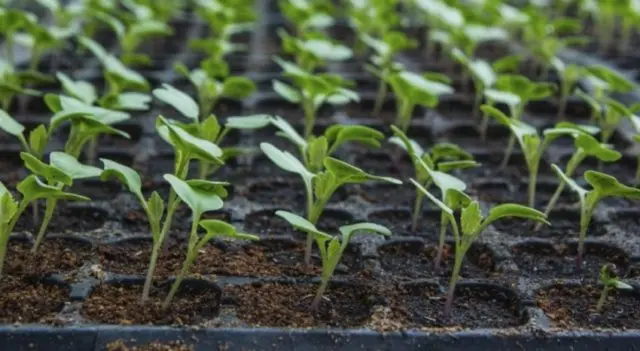
The amazing color of the leaves gives a decorative effect to the beds of Krautkaiser cabbage
The surface of the leaves is smooth, with a slight wax coating, the edges are without waviness. The leaves are juicy, with a pleasant taste.
The Krautkaiser variety is highly adaptable to climate conditions. It grows well in unstable temperatures, tolerates rise and fall with equal stability.
If the storage requirements are met, Krautkaiser shows an average keeping quality – up to 4 months. The transportability of the hybrid is excellent, suitable for mechanical processing.
The variety is grown on an industrial scale.
Pros and cons of Krautkaiser cabbage
It cannot be said that all vegetable growers like the variety. However, those who grew Krautkaiser distinguish a whole list of its advantages:
- Excellent adaptation of cabbage to environmental conditions and climate. Consistently good attitude to heat and cold.
- Heads of cabbage do not crack even at high humidity.
- Large-fruited varieties.
- Stable immunity to the main diseases of the culture.
- The density of the heads allows you to transport cabbage over long distances without damage.
- High yield of the variety on different soils.
- Versatility of use.
Also noted are some shortcomings that prevented the Krautkaiser variety from becoming a universal favorite. They appear only in the presence of violations:
- Agrotechnics. In this case, cabbage is affected by a fungal infection – clubroot.
- storage rules. The shelf life of cabbage is reduced, which is already considered average (no more than 4 months).
Another disadvantage is the average frost resistance of the variety. It does not allow you to grow a good crop in areas with severe winters.
Cabbage yield Krautkaiser F1
The organizers laid down the high yield of the variety. It is this parameter that attracts farmers. If the requirements of agricultural technology are met and the weather is favorable, then you can collect 8-13 kg of the Krautkaiser variety from 1 sq. m. Another factor that distinguishes cabbage is the friendly ripening of the forks and excellent presentation.
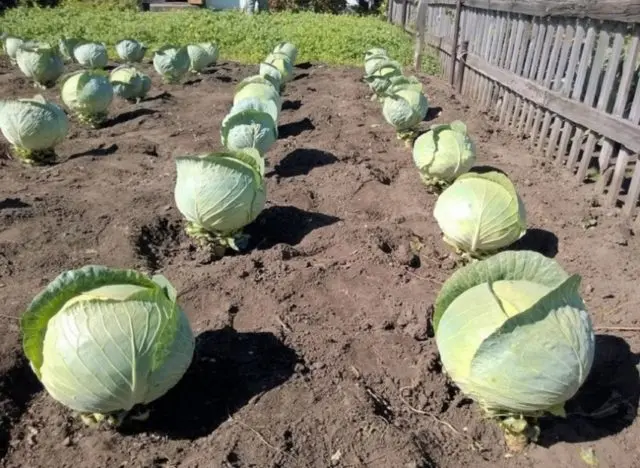
If you follow all the rules for leaving a small area, you can harvest a large crop.
Planting and caring for Krautkaiser cabbage
In the description of the variety, its exactingness to heat and average frost resistance are indicated. Therefore, Krautkaiser is almost never grown by direct sowing in the ground. The best option is seedling method. It gives maximum results, although it requires effort. To grow high-quality seedlings of cabbage, you must perform certain actions:
- Purchase certified planting material and prepare it for sowing. The seeds of the Krautkaiser hybrid are distinguished by high germination, the first sprouts appear 6-7 days after sowing.
- Determine the time for sowing. For seedlings, Krautkaiser cabbage is sown in the 2nd decade of April.
- Prepare seeds. To do this, wrap them in a wet cloth, water temperature for soaking + 45-50 ° C. Leave for 25 minutes, rinse with cold water and place in a stimulating solution for 12 hours. Then you will have to harden in the refrigerator for 2-3 days. During the day, the Krautkaiser seeds are in the room, at night they are sent to the refrigerator.
- Prepare container and soil mixture. For sowing, it is recommended to take separate cups. Soil for seedlings can be purchased ready-made or independently mix soddy land with humus in equal quantities. It is useful to add 1 cup of wood ash. Ignite the soil or spill it with a solution of potassium permanganate.
- Fill the cups with soil mixture with a layer of 7 cm, deepen the cabbage seeds by 1,5 cm, moisten with a spray bottle.
- Cover the crops with a film, put in a warm place with good lighting and an air temperature of at least + 18-23 ° C.
- As soon as the seedlings of the Krautkaiser variety hatch, remove the film and reduce the temperature to + 15-18 ° C.
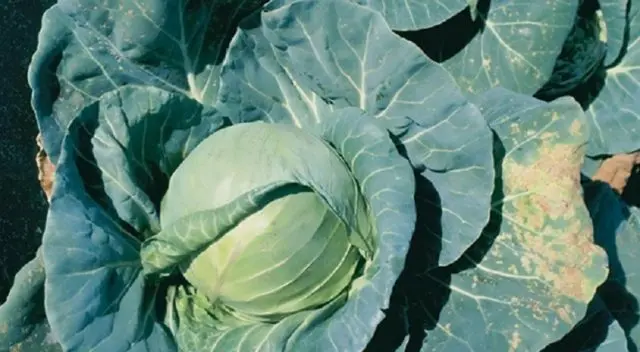
As soon as the seedlings hatch, you need to transfer the container to the light so that they do not stretch
When caring for seedlings, you need to optimize watering – monitor the level of drying of the top layer of soil. Excessive moistening of Krautkaiser cabbage seedlings will lead to rotting of the stem and root system. So that it does not stretch, it is necessary to provide good lighting for 14-15 hours. When sowing in a large planting box, it is imperative to dive the seedlings of the variety. This must be done at the stage of two full-fledged leaves, and the seedling should be deepened to cotyledon leaves. 14 days before planting, start hardening cabbage seedlings, taking the container outside.
Prepare the bed in advance. Cabbage variety Krautkaiser grows well on medium-neutral soil, nutritious and loose. Optimally – black soil or loam. Choose a sunny place, best after potatoes, cucumbers or legumes. Dig, fill with compost or humus. Cabbage seedlings are ready for planting 35 days after sowing – the whole of May, depending on the weather and climatic conditions.
In the garden, make recesses according to the scheme 50 × 50 cm or 60 × 40 cm, transfer the seedlings with a lump, cover with nutritious soil, water.
Caring for the Krautkaiser variety is not difficult, but the main points must be followed:
- Watering. Cabbage is very moisture-loving, so you have to water the plants all season. Seedlings are moistened 2-3 times a week, taking into account weather conditions. It is important to pay attention to watering when cabbage heads begin to form. Only at constant soil moisture Krautkaiser forms large heads. But at the time of their ripening, stop watering so that the heads of cabbage do not crack.Important! When irrigating, avoid getting moisture on the leaves.
- Feeding. In early June, Krautkaiser cabbage needs nitrogen, so it is recommended to use a solution of ammonium nitrate or an infusion of bird droppings. The second time nutrition is needed when forming the heads. The mineral composition is made for 10 liters of water. You will need superphosphate (5 g), urea (4 g), potassium sulfate (8 g). On one plant you need to pour 2 liters of the composition. A folk recipe is to sprinkle the near-stem circle with ash.
- Weeding and loosening. Important especially at the beginning of the growing season so that weeds do not overshadow the Krautkaiser cabbage. Then the variety itself suppresses weeds. Loosening can be continued until the end of the season.

Loosening and weeding significantly improve the quality of the variety heads
- Hilling. This procedure will strengthen the root system of cabbage and increase productivity. It is more convenient to carry it out after rain. Hilling is recommended for the variety 2 times with an interval of 3 weeks.
The crop must be harvested on a sunny dry day. Then the heads of cabbage sort out and send for storage.
Diseases and pests
The Krautkaiser hybrid has varying degrees of disease resistance. For example, it is not affected by punctate necrosis and fusarium. But rot (white and gray), keel, downy mildew or bacteriosis can get sick. This happens when the rules of agricultural technology are violated.
Kila is characterized by growths on the roots.
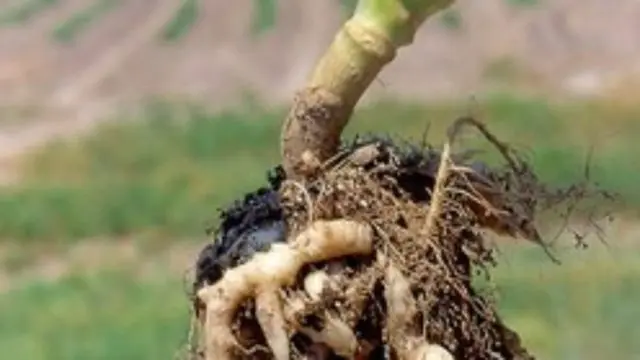
Infection can be prevented by liming the soil
Downy mildew affects not only the leaves, but also other parts of the Krautkaiser cabbage.
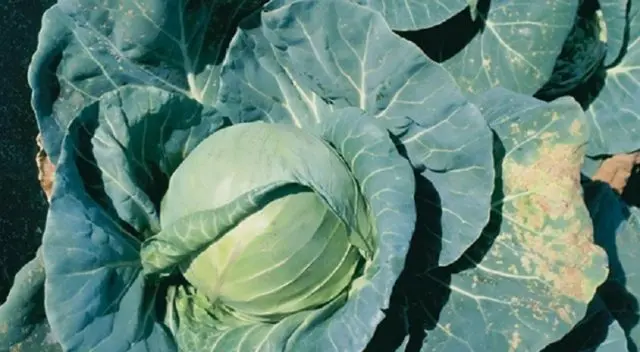
Bacteriosis makes cabbage unusable
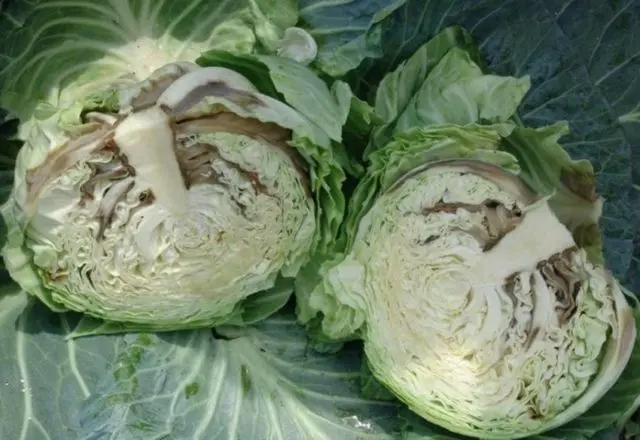
The most common pests are fleas, cabbage fly and aphids.
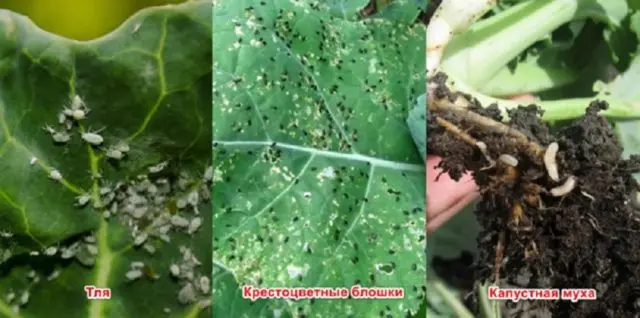
Pests must be fought with insecticides
Application
Vegetables do not keep for a long time. Therefore, it is often used to prepare salads, second and first courses, casseroles. Krautkaiser is amazingly suitable for pickling, the juiciness and taste of the leaves make the dish very tasty. Due to the high content of vitamin C, cabbage juice can be made from the leaves for medicinal purposes.
Conclusion
Krautkaiser cabbage is a worthy choice of variety for growing at home and on farms. If the requirements of agricultural technology are met, the hybrid will please you with a good harvest of high quality.










